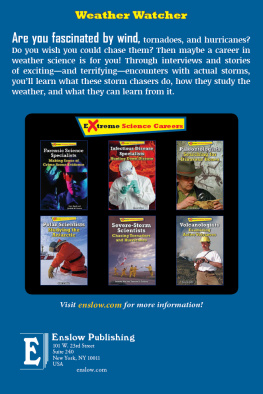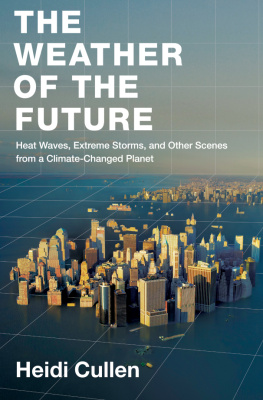For Harriet.
Placetne, Magistra?
VIKING
An imprint of Penguin Random House LLC
375 Hudson Street
New York, New York 10014

First published in the United States of America by Viking, an imprint of Penguin Random House LLC, 2017
 Smithsonian
Smithsonian
This trademark is owned by the Smithsonian Institution and is registered in the U.S. Patent and Trademark Office.
Smithsonian Enterprises:
Christopher Liedel, President
Carol LeBlanc, Senior Vice President, Education and Consumer Products
Brigid Ferraro, Vice President, Education and Consumer Products
Ellen Nanney, Licensing Manager
Kealy Gordon, Product Development Manager
Smithsonian National Museum of Natural History:
Dr. Don E. Wilson, Curator Emeritus, Department of Vertebrate Zoology
Copyright 2017 by Simon Winchester, Penguin Random House LLC, and Smithsonian Institution
LIBRARY OF CONGRESS CATALOGI NG-IN-PUBLICATION DA TA IS AVAILABLE
Ebook ISBN: 9780425288054
Penguin supports copyright. Copyright fuels creativity, encourages diverse voices, promotes free speech, and creates a vibrant culture. Thank you for buying an authorized edition of this book and for complying with copyright laws by not reproducing, scanning, or distributing any part of it in any form without permission. You are supporting writers and allowing Penguin to continue to publish books for every reader.
Version_1
Storm clouds over Grande Riviere, Trinidad, which developed into Hurricane Isaac (August 2012).
INTRODUCTION
Weather Lessons from an Ill Wind
The man calling said he knew I was interested in weather.
He was quite right. I had been for a long while. I had lived in India and written about the fascinating phenomenon of the summer rains called the monsoon. I had ventured to one of the worlds hottest places, a town called Jacobabad in Pakistan, where I fried an egg on the hood of my car; and then the wettest, a village in eastern India called Mawsynram, where people wear knups, large woven bamboo-and-leaf umbrellas that cover their heads and much of their bodies. I had also sailed in a small boat around South Africa and written about the freak winds and waves you encounter south of Madagascar. And I was supposed to know a thing or two about whirlpools, since I had once gone around the world reporting on the best and fiercest of them. So yes, I agreed with the magazine editor calling. I was indeed interested in weatherand I became veryinterested in the assignment he then proposed: I should follow the birth, growth, and effect of a big Atlantic Ocean hurricane and then write ten thousand words about it.
Go to the very place, he said, where a hurricane first formsas a little ripple of winds in West Africa, a dust devil in the Sahara Desert. Watch as it then develops over the Cape Verde islands of the eastern Atlantic. Stick with it as it becomes a proper tropical storm, a circulating body of wind somewhere over the middle of the ocean. Keep going with the storm as it turns into something more dangerous, a small actual hurricane in the eastern Caribbeanwhich could mature into a fully fledged high-category storm in the western Caribbean (by which time, with luck, Id be home safe and sound).
A ships barometer is a three-foot-long (one-meter-long) contraption made of wood and glass and tubes, and mounted in gimbals (pivoted supports) so it doesnt roll with the movement of a ship.
I started reading, researching, and planning, the timing being crucial. (I remembered the old mariners mantra from my sailing days about when the big late-summer storms blow in the Caribbean Sea: Junetoo soon. Julystand by. Augustif you must.Septemberremember. Octoberall over.) I would set off for Africa in May, then work my way back westward across the ocean through June, and Id be in position in the Caribbean in July when storm season would be in full swing.
And then, like storms are wont to do, the assignment fizzled out. The editor decided it was too expensive. He told me on the day I was supposed to leave for Africa. I was devastated. This would have been an amazing article to research, and a great challenge to write.
But this cloud (since we are talking about atmospheric phenomena) had a decidedly silver lining. All the reading I had done for the ill-fated hurricane story transformed a topic I was mildly interested in to one I was now fully captivated by: the subject of weather. (One of the many benefits of working as a writer, a calling that involves learning something new every day.)
Over the years since, I have festooned my little house and garden in western Massachusetts with the tools of the trade of a very amateur meteorologist. There was already an ancient cow-shaped weather vane on top of the big barn, with the beasts nose pointing in the winds direction: that was a start.
In a westerly wind, the cows face on my weather vane points to the west. I have long thought it a curious convention that a winds direction is always the direction it is coming from, while an ocean currents direction is where it is going to. So the cold current that brings all the fogs to San Francisco is said to be a southerly current, since it is heading from north to south, while a bitter wind that brings Arctic gales down from Newfoundland to New York City is said to be a noreaster, since it is coming from the northeast. The fact that it is heading to the southwest isnt relevant, not to a meteorologist, at least.
The first piece of real meteorological equipment I would own came as a birthday present from my parents. It was a quite splendid barograph, a lovely old-fashioned-looking confection of brass and teak and glass made by a firm in England. A barograph is a tool for measuring atmospheric pressure and recording it on paper. It has a clockwork-powered and slowly rotating brass drum, protected and visible inside a glass-walled box, and a complicated-looking arrangement of levers and vacuum tubes, and a rod with a pen at its end that records changes on the slow-moving paper wrapped around the revolving drum. The device marks steady changes in atmospheric pressure as it rises and falls through the hours of the day and the days of the week during each seven-day period.



















 Smithsonian
Smithsonian


